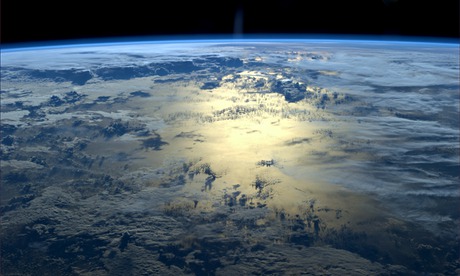
Surging carbon dioxide levels have pushed greenhouse gases to record highs in the atmosphere, the World Meteorological Organisation (WMO) has said.
Concentrations of carbon dioxide, the major cause of global warming, increased at their fastest rate for 30 years in 2013, despite warnings from the world’s scientists of the need to cut emissions to halt temperature rises.
Experts warned that the world was “running out of time” to reverse rising levels of carbon dioxide (CO2) to tackle climate change.
Data show levels of the gas increased more between 2012 and 2013 than during any other year since 1984, possibly due to less uptake of carbon dioxide by ecosystems such as forests, as well as rising CO2 emissions.
The annual greenhouse gas bulletin from the WMO showed that in 2013 concentrations of CO2 in the atmosphere were 142% of what they were before the Industrial Revolution.
Other potent greenhouse gases have also risen significantly, with concentrations of methane now 253% and nitrous oxide 121% of pre-industrial levels.
Between 1990 and 2013 the warming effect on the planet known as “radiative forcing” due to greenhouse gases such as CO2 rose by more than a third (34%).
The bulletin reveals concentrations of gases in the atmosphere, not emissions – around quarter of which are absorbed by the oceans and a further quarter by ecosystems.
Oceans cushion the increases in carbon dioxide that would otherwise be seen in the atmosphere – but at a cost, with the world’s seas becoming more acidic at a rate not seen for at least 300m years, the WMO said.
WMO secretary-general Michel Jarraud said: “We know without any doubt that our climate is changing and our weather is becoming more extreme due to human activities such as the burning of fossil fuels.
“The greenhouse gas bulletin shows that, far from falling, the concentration of carbon dioxide in the atmosphere actually increased last year at the fastest rate for nearly 30 years.
“We must reverse this trend by cutting emissions of CO2 and other greenhouse gases across the board. We are running out of time.
“Carbon dioxide remains in the atmosphere for many hundreds of years and in the ocean for even longer. Past, present and future CO2 emissions will have a cumulative impact on both global warming and ocean acidification. The laws of physics are non-negotiable.”
Carbon dioxide is responsible for four-fifths of the increase in warming by greenhouse gases, with concentrations in the atmosphere averaging 396 parts per million (ppm) in 2013.
Last year levels increased by 2.9ppm – the largest annual increase seen from 1984 to 2013.
At current rates, annual concentrations will pass the symbolic 400ppm in 2015 or 2016, the WMO said, although that level has already been reached over shorter periods than a year as CO2 levels fluctuate seasonally and regionally.
For the first time, the WMO bulletin includes a section on ocean acidification, caused by the uptake of carbon dioxide into the seas, which can harm the ability of wildlife such as corals, molluscs and some plankton to form shells.
It could also reduce survival, hit development and growth rates and effect physiological functions in wildlife.
Prof Joanna Haigh, co-director of the Grantham Institute for Climate Change and Environment, Imperial College London, said: “Far from a slowdown, the concentration is rising faster than ever – with an inevitable impact on future global temperatures... steps need to be taken now to reduce CO2 emissions.”
Prof Dave Reay, chair in carbon management at the University of Edinburgh, said: “This is the litmus test when it comes to our efforts to reduce emissions and on this evidence we are failing. Of particular concern is the indication that carbon storage in the world’s forests and oceans may be faltering.
“So far these ‘carbon sinks’ have been locking away almost half of all the carbon dioxide we emit. If they begin to fail in the face of further warming then our chances of avoiding dangerous climate change become very slim indeed.”
